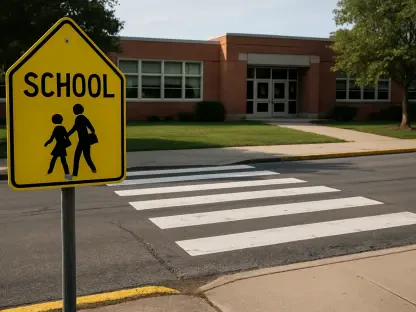Superintendent Kimberlee Armstrong has presented her first budget proposal for Portland Public Schools (PPS), seeking $2 billion for the 2025-26 school year. Taking the helm last summer, Armstrong confronts significant financial hurdles amid declining enrollment and rising costs that threaten the fiscal stability of Oregon’s largest school district.
The Proposed Budget and Its Key Component
The Significance of the 2025 Bond
Central to Superintendent Armstrong’s proposed budget is the $1.83 billion bond, which is set to be voted on the May ballot. This bond is critical because it aims to renew the current tax rate, thereby securing the funds necessary for essential school infrastructure repairs and improvements. However, it is important to note that the bond money is restricted and cannot be allocated to address the budgetary deficits impacting classroom and program funding. The bond’s purpose is solely to enhance the physical condition of school buildings, ensuring they are safe and conducive to learning.
Despite the restricted nature of the bond, its approval is essential for maintaining the quality of school facilities and preventing further deterioration, which, if not addressed, could result in even higher costs down the line. The passage of this bond is a crucial step in supporting the overall educational environment but does not directly address the immediate financial gaps faced by the district in its operational budget.
Historical Financial Challenges
For the past three years, PPS has grappled with a structural deficit, a persistent imbalance where the district’s expenditures exceed its revenues. Superintendent Armstrong acknowledges that this fiscal strain predates her tenure but has been aggravated by rising education costs, stagnant funding, and declining student enrollment. The challenge is that while expenses continue to rise due to inflation and other factors, the funding available to the district has not kept pace, leading to a deepening fiscal gap.
The ballooning costs include investments in employee compensation, additional teacher planning time, and contributions to the Public Employee Retirement System (PERS). Concurrently, the district has seen almost an 11% drop in student enrollment since the COVID-19 pandemic began, impacting the revenue that is largely based on student numbers. This downward trend has imposed a significant financial strain, requiring the district to find ways to balance the budget amid dwindling resources.
Factors Contributing to the Deficit
Rising Costs vs. Enrollment Decline
Inflation has continuously driven up the costs of goods and services, which in turn increases the financial burden on PPS. Moreover, the district’s commitment to maintaining competitive employee compensation, adequate teacher planning time, and contributions to PERS has further escalated expenses. These rising costs have coincided with a decline in student enrollment, which dropped by nearly 11% since the outbreak of the COVID-19 pandemic. This reduction in student numbers directly affects the district’s funding levels as state funding formulas are typically based on enrollment figures.
This creates a cyclical problem where fewer students result in less funding, which then impacts the district’s ability to maintain programs and services, potentially driving further declines in enrollment as the quality of education is perceived to drop. This cycle exacerbates the budget shortfall, making it increasingly difficult to rectify the financial imbalance. The district’s focus must therefore be on stabilizing and eventually increasing enrollment to secure necessary revenues while managing rising costs.
Impact of Reduced Special Revenue
Compounding the financial difficulties, PPS faces challenges from reduced special revenue sources. With the conclusion of federal pandemic aid, the district sees the evaporation of funds that were crucial in offsetting some of the immediate impacts of the pandemic. Furthermore, potential federal budget cuts threaten to reduce the financial support traditionally available to schools across the nation. For instance, federal Title programs, which support various education initiatives, have experienced a 25% reduction in funding due to political uncertainties and shifting priorities.
These cuts have had a pronounced impact, particularly because they often supported programs aimed at addressing educational disparities and supporting vulnerable student populations. The drying up of these essential funds, coupled with reduced state and local revenues due to lower student numbers, presents a daunting challenge for the district’s financial planners. They must now find ways to replace or compensate for these lost funds while maintaining a commitment to providing high-quality education.
Strategic Response by the Administration
Community-Driven Priorities
Despite financial constraints, Portland Public Schools (PPS) plans to maintain its commitment to effective educational programs by adhering closely to community feedback. Recent listening sessions have allowed district leaders to gather strong insights and prioritize initiatives that resonate most with the public. These include early literacy programs, math acceleration strategies, instructional coaches, culturally responsive curricula, and targeted interventions to improve student engagement and attendance.
Superintendent Armstrong and her team emphasize the significance of these initiatives, understanding that their effectiveness can directly impact educational outcomes and, by extension, help stabilize enrollment. By focusing resources on proven strategies, the district aims to ensure that even within a constrained budget, students receive high-quality, supportive education that can foster academic success and personal growth.
Budget Cuts and Reconfiguration
To address the forecasted $130 million budget gap over the next three years, Superintendent Armstrong has proposed significant budget cuts totaling around $40 million for the upcoming school year. The primary focus for these cuts is the district’s central office, with plans to eliminate approximately 85 central administration positions and over 200 school-level roles. This move is aimed at reducing overhead costs and redirecting funds to more critical areas within the schools themselves.
Additionally, the district plans to reconfigure certain school-level operations to adapt to the tighter budget. Approaches include merging upper elementary grade levels into blended classrooms and establishing minimum class sizes for middle and high schools. These measures are designed to maintain educational quality while optimizing resource allocation. However, such cuts highlight the stark challenges faced and the difficult decisions required to navigate this financial crisis.
Path Forward
Reimagining District Operations
Superintendent Armstrong characterizes the current fiscal challenge as a fight for the future, emphasizing the critical need for adequate funding across all government levels. She advocates for a reimagining of district operations that not only enables PPS to endure the immediate financial constraints but also lays the foundation for a resilient and sustainable educational system. Armstrong’s vision is anchored in the core values of equity and excellence, asserting that all children can thrive even amidst financial adversity.
The path forward involves innovative thinking and a strong commitment to the district’s core values. Reimagining operations might include more efficient use of resources, fostering community partnerships, and leveraging technology to enhance educational delivery while reducing costs. This strategic approach aims to build a stronger, more adaptable system capable of meeting the diverse needs of the student population.
Community Engagement and Next Steps
Superintendent Kimberlee Armstrong recently unveiled her inaugural budget proposal for Portland Public Schools (PPS), requesting $2 billion for the 2025-26 academic year. Since stepping into her role last summer, Armstrong has faced formidable financial challenges, primarily due to decreasing student enrollment and escalating operational costs. These challenges pose a substantial threat to the fiscal health of Oregon’s largest school district. As enrollment numbers dwindle, less funding from state sources becomes available, thus intensifying budget constraints. Concurrently, rising costs in areas such as staffing, facilities maintenance, and educational resources add pressure on the district’s budget. Armstrong’s proposal aims to address these issues by carefully reallocating resources and implementing cost-saving measures, while ensuring that students continue to receive a high-quality education. With a focus on long-term fiscal stability, Armstrong seeks to navigate PPS through these turbulent financial waters and secure a sustainable future for the district’s diverse student population.









